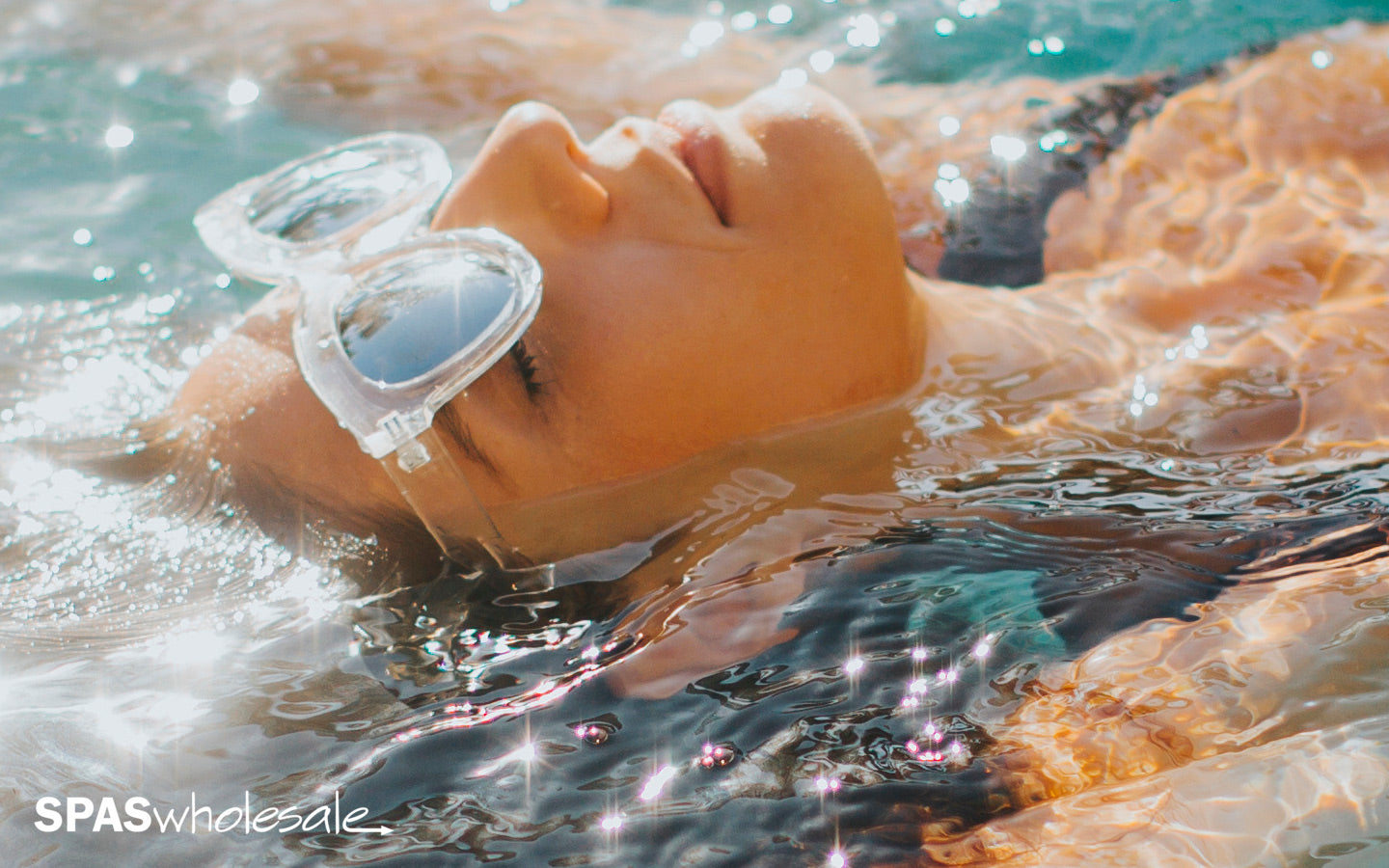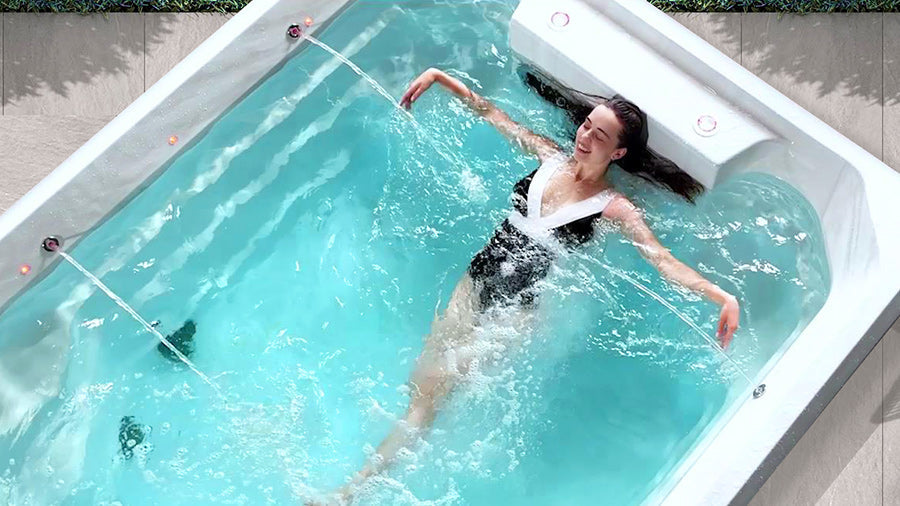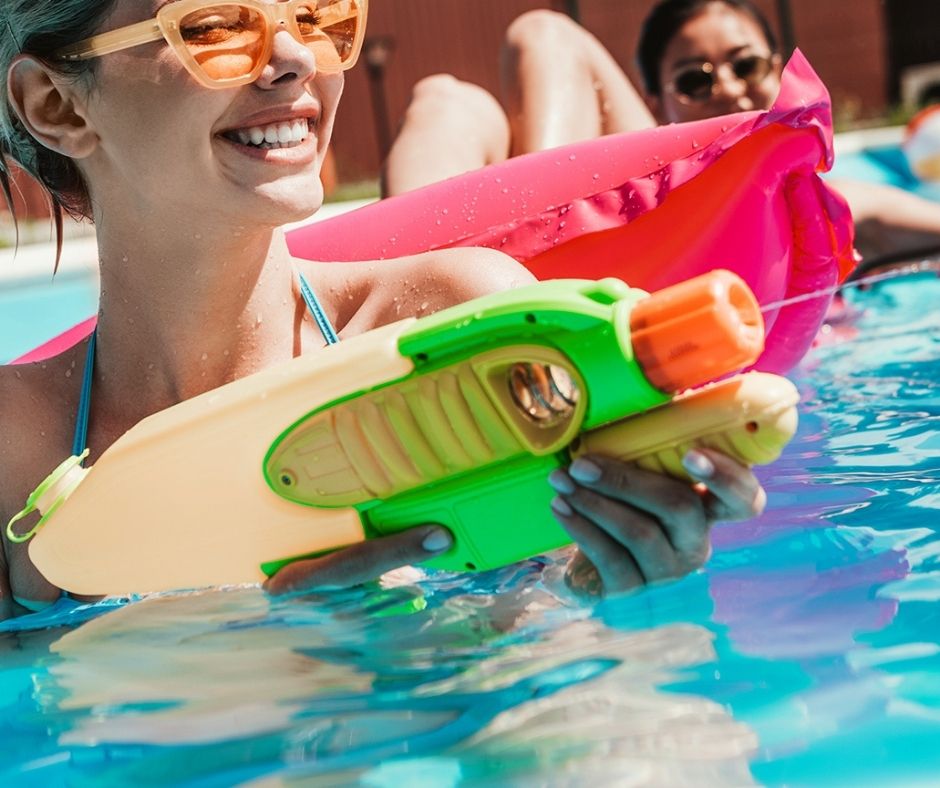The Causes of White Mold
If you notice white flakes in your spa water, you are probably seeing white mold. It’s a fairly common spa water problem and thankfully one easily fixed.
This article will show you exactly how to get rid of white mold as quickly as possible.
White Mold in your Hot Tub Water
Hot tubs are hot, humid and full of moisture. And the perfect environment for mold to flourish. With regular cleaning and maintenance and maintaining your spas water quality you can help prevent any mold growth.
White mold is a biofilm that forms from bacteria, dead skin cells, and body oils and lotions.It’s not actually algae, but a naturally occurring fungus. It occurs when the spa water and shell is not balanced and cleaned on a regular basis. So if you are experiencing whire mold it's important to take action and remove it.
Are the white flakes calcium scaling or Do you have a white mold problem?
Sometimes, however, the white flakes in your spas water can be caused by calcium scale deposits. We can determine this by performing the following test.
- Sample of the flakey water
- Add 20 drops of liquid bleach into the water sample. Stir the water and wait 30 minutes.
- After 30 minutes if the white flakes remain it’s most likely you have calcium scale deposits.
- If after 30 minutes there are no flakes remaining you most likely have a white water mold issue/
Test & balance your water chemistry weekly
White mold problems often result from the improper balancing of your water chemistry. Regularly test pH, alkalinity and calcium levels using the spa test strips that will have come with your spa chemical test kit.
Strive the following correct water balance:- Alkalinity between 80-120
- pH between 7.2-7.8
- Chlorine between 1.5-3 or Bromine 3-5
- Remove cover when adding spa shock and other chemicals.
Remember it's best practice to change the spa water completely at least every three or four months to prevent having to struggle to balance poorly balanced water in the first place.
How to Remove White Water Mold from Spas
We recommend thorough decontamination of your spa if you have white mold, as this is usually a symptom of something that needs more attention.
Super Chlorinate for 72 hours
Increase your spa's chlorine levels to at least 20ppm for 72 hours, checking levels every 24 hours. Ensure all water passages are open, with diverter valves midway, so that all valves, features, waterfalls, jets, and pipes are saturated with the super chlorinated water. Missing a spot can undo all your work, as biofilm and white mold can spread quickly.
If you find your spa has a white water mold buildup, don’t wait. If the mold is allowed to grow it will become harder to remove it for good.
Cleanse the pipes of debris and slime using pipe cleaning chemicals
Super chlorinated water will kill mold and bacteria, but won't remove associated debris and slime. A spa pipe cleaner will remove debris and slime from pipes.
Don’t forget your spa drains
It's easy to forget about your spa drains, but it's important to regularly drain a bit of chlorinated water into them to prevent biofilm buildup.
Flush out any debris in your pipes by turning on your Jets
The chemicals used to clean the pipes should have loosened the mold, so don't be surprised if some is still being expelled from the spa jets.
Drain Your Spa
Step 1: Turn-off main electrical breaker to spa.
Step 2: Locate drain spout below equipment compartment door.
Step 3: Pull the drain spout out with a slight clockwise turn.Note: Drain spout is fully extended at approximately 50mm. Use pliers if needed.
Step 4: Remove drain cap.
Step 5: Attach a standard garden hose. Push the drain spout in halfway to actuate the drain.Note: The Spa will drain about 20 litres per minute. Ensure that the drainage is in an area safely away from window wells or basement entries.
Step 6: Once the spa is fully drained, pull the drain spout out all the way, remove hose, replace the drain cap and push drain in all the way.
Clean the Spa Shell
Use a spa shell cleaning product to thoroughly clean all of the spa surfaces. Make sure you focus on areas where you can see the mold. Clean the spa shell, footwell, jet faces and all exposed areas within the spa. Pay special attention to corners and crevices where mold, algae, or bacteria may be lurking. Use a soft non-scratch cloth or nylon brush to remove any residue.
Rinse all surfaces thoroughly and drain all rinse water to avoid the formation of foam when filling the spa bath.
Properly Clean The Hot Tub Cover
Your mold problem could be caused by not correctly cleaning or maintaining the hot tub cover. Carrying out proper maintenance of your hot tub cover will also keep the cover in good condition for many years. Without proper maintenance, a spa covers vinyl can prematurely fade, crack and will eventually require replacement.
Note: The use of damaging products to clean vinyl spa covers is the most common cause of cover fading, cracking and deterioration. Cleaning vinyl only requires a gentle cleanser.
Avoid using the following products to clean your cover:
- Alcohol
- Dish Soap
- Bleach
- Oil
- Detergent
Properly Clean Your Cover:
- Wet your cover down with a garden hose to help to loosen the dirt.
- Next apply a non-abrasive cleaner to a cloth or sponge and wipe down the cover.
- For caked on dirt or bird droppings apply a non-abrasive cleaner and let soak 1-3 minutes.
- Wipe way and repeat if necessary
Refill the Spa
Step 1: To avoid air pockets in the pump(s), refill the spa with water by placing the hose into the filter compartment through the Weir door. Fill to the water level indicator on the faceplate of the filter assembly.
Step 2: Restore the electrical power supply.
Step 3: Press any button to reset the control system.
Step 4: Following instructions in Starting the Spa with New Water.
Important: Never fill the spa with soft water unless an appropriate mineral supplement is immediately added. If your water is extremely hard, it is preferable to either dilute the water’s hardness by blending the water with water from a water softener, or by the addition of a special water softening chemical.
Don't Forget to Clean Your Spa Filters
Spa filters should be cleaned every 3-6 weeks, or as required. This depends on bather usage and surrounding elements. Regular cleaning of filters will ensure maximum filtration of spa water and will prolong the life of your filter.
Just hosing down the filter will not clean it. The filter traps body fats which are an oily build-up that water will not disperse. Use Spa Fresh Filter Scrub to dissolve these body fats, then hose them down with a garden hose.
Summing Up
Preventing white mold is our best way to enjoy an optimum spa experience. If you do develop white mold, just follow these simple steps and make sure to be more consistent in cleaning and balancing your spas water in the future. Happy soaking!
More Articles from Spas Wholesale
- 5 ways to maximise the life of your spa cover
- 5 Things to Consider When Buying A Spa
- Choosing the Perfect Hot Tub Gazebo or Enclosure
- Top 10 Spa Health Benefits
- Spa & Swim Spa Do's and Don'ts
- Balancing Spa pH Levels
- What causes hot tub scum
- A guide to spa water temperature
- Spa clear user guide
- Spa safety considerations
- Spa water temperature guide
- How to prevent spa algae
- Keeping your spa water balanced
- Starting the spa with new water





Share:
Spa Water Temperature Guide
10 benefits of owning a swim spa